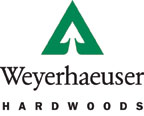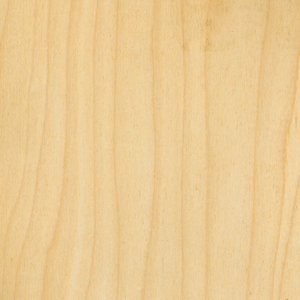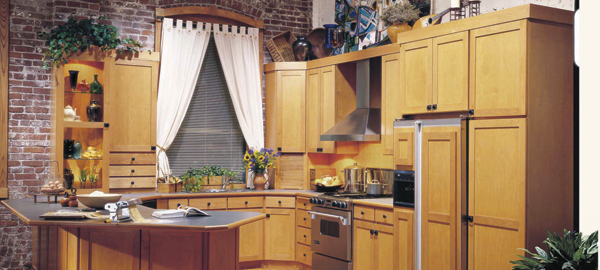
Sponsored by: Weyerhaeuser Hardwoods
Pacific Coast Maple
 |
| Family Name: Acer macrophyllum of the Family Aceraceae Common Names: Pacific Coast maple, big leaf maple, Pacific maple, Oregon maple Height/Weight: Pacific Coast maples average from 50 to 60 feet in height at maturity, with diameters of 12 to 36 inches. They have an average weight of 35 pounds per cubic foot, with a specific gravity of 0.54. Properties: With proper controls Pacific Coast maple can be quickly kiln-dried with a minimum of degrade. The wood has good strength properties although not as strong as the East Coast hard maples. Pacific Coast maple finishes well, with no need to fill the grain. Experts recommend hook angles of 20 degrees for best results when planing. |
Pacific Coast maple — Acer macrophyllum — goes by a variety of terms, among them big leaf maple and Oregon maple, but by any name the domestic hardwood is known as the soft maple of the Western United States and Canada. This “big leaf” maple is a wood of importance in the Pacific Northwest, second to red alder among native hardwood species in abundance and commercial importance.
Dave Bosley, Weyerhaeuser products manager, said the species has a wide range of uses, including as a substitute for cherry. “Pacific Coast maple is used for many of the classic applications for hardwoods, such as cabinets, furniture, mouldings and flooring. It is also used for countertops, paint brush handles, picture frames, gift boxes and coat hangers. The highly figured maple is used for the manufacture of electric guitar bodies and other musical instruments.”
Ron Loe, president and owner of Wood Castle, located in the Willamette Valley between Albany and Corvallis, WA, is very familiar with Pacific Coast/Oregon maple. For more than 25 years, his company has been making solid wood furniture from cherry or maple, with oak, walnut, cherry and other species used occasionally. Oregon maple, he said, ages in color from a light oat-blonde to honey-gold over time.
Although Loe said it can be a “cantankerous wood” to work with in regards to machining, “it is also well worth it. The variety of grains the wood contains makes it a very beautiful, interesting wood.” Possible machining difficulties, he said, can include tear-out when planing and burning when sanding.
However, he quickly added, “A big plus is that it is native to the Northwest region where we are located. We like to source material in close proximity and using Oregon maple gives us a green option, which is an important factor for us.”
The species’ use, however, is not confined to the West Coast. Allegheny Wood Works in Lake City, PA, for example, uses the lumber in its front entry doors. The company describes the wood’s color as a pale-pinkish brown to almond, with generally no difference between the heartwood or sapwood. “The fine grain wood is similar to birch and cherry with respect to growth ring contrast,” it says on Allegheny’s website. It also promotes Pacific Coast maple as an alternative to clear alder or cherry “due to the similar grain and color.”
Commercial Appeal
The wood is one of the few commercial hardwood species on the Pacific Coast and the only commercial maple of note on the West Coast. Small compared to its conifer associates, most mature big leaf maples are 50 to 60 feet tall, although large trees can reach heights of 100 feet with diameters of 36 to 48 in. The name big leaf maple comes from the fact that its leaves are typically 12 inches across, although some can have widths of 24 inches. Big leaf maple is an excellent shade tree.
While the East Coast maples are the more predominantly used wood for maple syrup, the sap from Pacific Coast maples also can be made into syrup. Considered to be moderately long-lived, some of the Pacific Coast maples live to 300 years of age.
Most of the estimated volume of standing saw timber in the United States is found in Washington and Oregon, while in Canada, big leaf/Pacific Coast maple is predominant in British Columbia. The name “Pacific Coast” also comes from the fact that the trees often grow near the ocean and rarely more than 186 miles inland.
 |
| Pacific Coast maple is popular for use in cabinets, furniture and mouldings. Photo courtesy of Weyerhaeuser. |






Have something to say? Share your thoughts with us in the comments below.